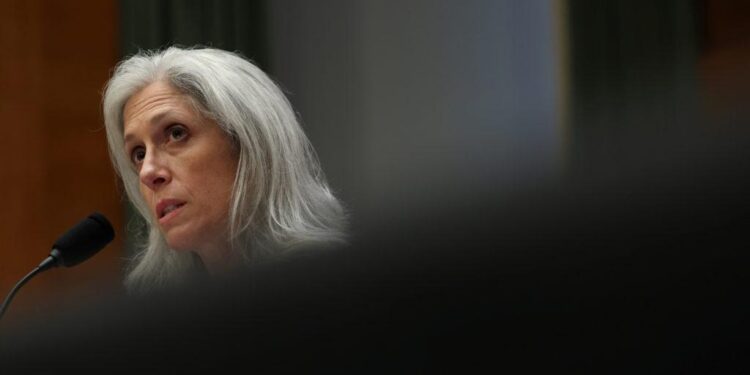The Centers for Disease Control and Prevention (CDC) is facing a significant leadership shakeup as Director Susan Monarez has been ousted, accompanied by the resignations of four other top executives. This abrupt turnover at one of the nation’s leading public health agencies raises questions about the future direction and stability of the CDC amid ongoing public health challenges. The departures come at a critical time, prompting concerns among policymakers and health experts about the agency’s ability to effectively respond to emerging health threats.
CDC Leadership Shakeup Raises Questions About Agency Stability
Susan Monarez’s departure marks an unprecedented moment in the CDC’s recent history, as the agency faces growing scrutiny over its public health strategies and internal management. Alongside Monarez, four additional senior leaders resigned abruptly, signaling deep-rooted challenges that could impede the CDC’s ability to coordinate effective responses to emerging health threats. Industry experts suggest that these shifts may affect ongoing projects related to epidemic preparedness and vaccine distribution policies.
The rapid turnover at the top raises pressing questions regarding organizational stability and future leadership direction. Below is a brief overview of the recent changes within the senior leadership ranks:
| Position | Former Leader | Departure Date | Reason |
|---|---|---|---|
| CDC Director | Susan Monarez | April 2024 | Forced Resignation |
| Chief Medical Officer | James Thornton | April 2024 | Voluntary Resignation |
| Deputy Director for Policy | Linda Chan | April 2024 | Voluntary Resignation |
| Director of Communications | Mark Everett | April 2024 | Voluntary Resignation |
| Chief Science Officer | Rashida Khan | April 2024 | Voluntary Resignation |
- Impact on ongoing research: Disruption of key public health initiatives could delay critical disease surveillance enhancements.
- Staff morale concerns: Sudden leadership exits have reportedly unsettled lower-level employees and fostered internal uncertainty.
- Political ramifications: The shakeup coincides with heightened congressional oversight of federal health agencies.
Implications of Multiple Resignations on Public Health Policy and Response
The abrupt departure of CDC Director Susan Monarez alongside four other key leaders signals a critical inflection point for the agency’s operational stability and strategic direction. Such a significant leadership vacuum comes at a time when public health challenges demand cohesive and decisive action. The continuity of ongoing initiatives, particularly those related to pandemic preparedness and infectious disease control, risks being undermined by gaps in guidance and disruptions in communication channels both within the agency and to the public. Policy formulation processes may slow down, increasing vulnerability to emerging health threats and potentially eroding public trust in CDC’s authority.
Immediate consequences are likely to include:
- Delays in the rollout of critical vaccination campaigns
- Reduced coordination with state and local health departments
- Challenges in maintaining funding allocations aligned with health priorities
- Complications in data-driven response strategies due to leadership turnover
| Aspect | Potential Impact | Risk Level |
|---|---|---|
| Policy Continuity | Risk of interruptions in health mandates | High |
| Public Trust | Potential erosion leading to decreased compliance | Moderate |
| Operational Efficiency | Delayed responses to emergent health crises | High |
Impact of CDC Leadership Departures
The sudden exit of CDC Director Susan Monarez and four key leaders creates a significant leadership gap at a critical time for public health, threatening the agency’s stability and strategic direction. This disruption poses risks to several vital areas, especially amid ongoing public health challenges.
Immediate Consequences:
- Delays in critical vaccination campaigns
- Reduced coordination with state and local health departments
- Challenges in maintaining funding aligned with health priorities
- Complications in data-driven response due to leadership turnover
Risk Assessment:
| Aspect | Potential Impact | Risk Level |
|——————–|————————————————|————|
| Policy Continuity | Risk of interruptions in health mandates | High |
| Public Trust | Potential erosion leading to decreased compliance | Moderate |
| Operational Efficiency | Delayed responses to emergent health crises | High |
If you’d like, I can also help you draft recommendations or further analyze these impacts.
Experts Recommend Strengthening Internal Communication and Transparency at the CDC
In the wake of recent unprecedented leadership departures at the CDC, specialists emphasize the urgent need for a robust overhaul of internal communication protocols. The agency’s complex organizational structure has, according to experts, fostered silos that hinder timely information flow and decision-making. Without transparent dialogue between departments and clear channels for frontline feedback, the agency risks delayed public health responses and diminished stakeholder trust.
Key recommendations include:
- Implementing regular cross-departmental briefings to ensure alignment on priorities.
- Establishing an internal transparency dashboard for real-time updates on ongoing initiatives.
- Enhancing whistleblower protections to encourage reporting of internal issues without fear.
- Fostering open dialogue forums where employees at all levels can contribute insights.
| Recommended Practice | Potential Impact |
|---|---|
| Cross-Departmental Briefings | Improved coordination, faster response times |
| Transparency Dashboard | Greater accountability, increased trust |
| Whistleblower Protections | Early issue detection, safer workplace |
| Open Dialogue Forums | Enhanced employee engagement, innovation |
Summary:
Following recent leadership changes at the CDC, experts highlight the critical need to improve internal communication to prevent organizational silos that delay decision-making and reduce trust. Key recommendations include:
- Cross-Departmental Briefings: Regular meetings to align priorities and improve coordination.
- Transparency Dashboard: A real-time platform for tracking initiatives to boost accountability.
- Whistleblower Protections: Safeguards encouraging employees to report issues without fear.
- Open Dialogue Forums: Inclusive spaces for employees to share insights, fostering engagement and innovation.
These practices aim to enhance response times, accountability, workplace safety, and overall employee involvement within the CDC.
If you’d like, I can help reformat, expand, or tailor this summary for a specific audience or purpose!
In Summary
The departure of CDC Director Susan Monarez, alongside four other senior leaders, marks a significant moment of upheaval within the agency at a critical time for public health oversight. As the CDC navigates this leadership transition, questions remain about the future direction and stability of the agency tasked with safeguarding the nation’s health. Stakeholders and the public will be closely watching how new appointments and structural changes aim to restore confidence and ensure effective management amid evolving health challenges.































